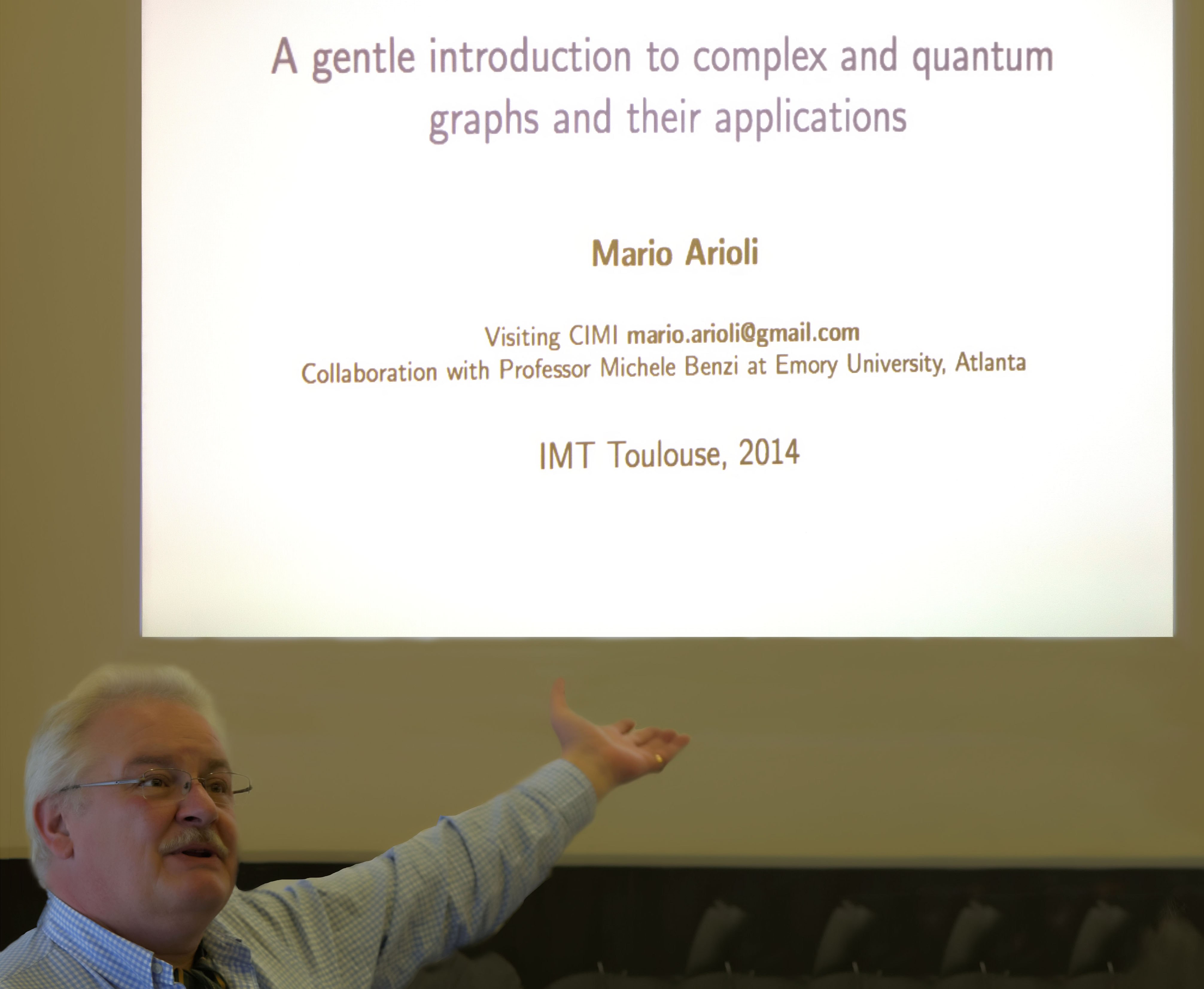Lectures from Mario Arioli, Amphitheatre Schwartz, IMT, Building 1R3
21 Oct. 2014
- 1st lecture from 9.45 to 10.45 am :
A gentle introduction to complex and quantum graphs and their applications.
Résumé : A quantum graph is a graph where we associate with each edge a differential law that models the interaction between the two corresponding vertices. The use of quantum graphs (as opposed to more elementary graph models, such as simple unweighted or weighted graphs) opens up the possibility of modelling the interactions between agents identified by the graph’s vertices in a far more detailed manner than with standard graphs. Quantum graphs are now being widely used in physics, chemistry and engineering (nanotechnology) problems but can also be used, in principle, in the analysis of complex phenomena taking place on large complex networks, including social and biological networks. Such graphs are characterised by highly skewed degree distributions, small diameter, high clustering coefficients and have topological and spectral properties that are quite different from those of the highly regular graphs or lattices arising in physics and chemistry applications. The purpose of this talk is twofold. First, we illustrate the properties of quantum graphs and of complex graphs in modelling several applications. Second, we investigate the numerical solution of PDEs posed on quantum graphs with complex topologies. As an example, we consider different time dependent PDEs for modelling the spreading of information on a complex network of interacting agents.
- 2nd lecture from 11.00 to 12.00 am :
Numerical linear algebra and interpolation spaces approximation
Résumé : We describe norm representations for interpolation spaces generated by finite-dimensional subspaces of Hilbert spaces. These norms are products of integer and non-integer powers of the Grammian matrices associated with the generating pair of spaces for the interpolation space. We include a brief description of some of the algorithms which allow the efficient computation of matrix powers. We consider in some detail the case of fractional Sobolev spaces both for positive and negative indices together with applications arising in preconditioning techniques.
M. Arioli conf.jpg

